| |
|
|
|
|
|
|
|
|
|
|
| |
| |
 |
|
| |
田润德 编译
文/图 2020-09-12 19:36 |
|
| |
|
|
|
|
| |
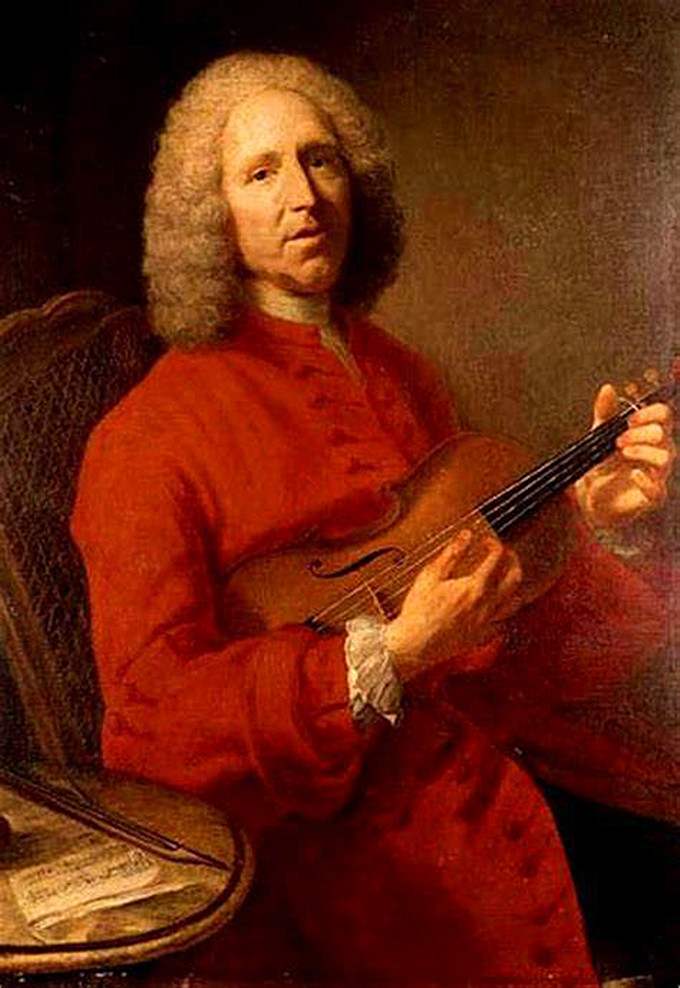 |
|
|
|
| |
让-菲利普.拉摩(Jean-Philippe
Rameau,1683——1764) |
|
|
|
| |
|
|
|
|
| |
让-菲利普·拉莫歌剧《希波吕托斯与阿里奇埃》 |
|
|
|
| |
2012年,巴黎国家歌剧院
让-菲利普·拉莫:希波吕托斯与阿里奇埃
2012年巴黎国家歌剧院
演员:
莎拉·康诺利(费德尔),
Anne-Catherine吉莱(Aricie),
安德里亚·希尔(黛安)
Jael Azzaretti (L'Amour / Une Pretresse / Une Matelote),
莎乐美哈勒(俄诺涅),
Marc Mauillon(提西福涅),
Aurelia Legay (La Grande Pretresse de Diane / Une Chasseresse / Une
Pretresse),
遮阳帽Lehtipuu(希波吕忒),
Stephane Degout (Thesee),
弗朗索瓦·里斯(普卢顿/朱庇特),
Aimery Lefevre (Arcas / Deuxieme Parque)
曼努埃尔努涅斯卡米洛诺(Un Suivant / Mercure),
杰罗姆·瓦尼尔(Neptune / Troisieme Parque)
阿斯特里音乐会乐团
指挥:艾曼纽·哈伊姆
导演:伊万亚历山大 |
|
|
|
| |
Cast:Jean-Philippe Rameau -
Hippolyte et Aricie
2012, Opéra national de Paris
Sarah Connolly (Phèdre),
Anne-Catherine Gillet (Aricie),
Andrea Hill (Diane),
Jaël Azzaretti (L'Amour / Une Prêtresse / Une Matelote),
Salomé Haller (Oenone),
Marc Mauillon (Tisiphone),
Aurélia Legay (La Grande Prêtresse de Diane / Une Chasseresse / Une
Prêtresse),
Topi Lehtipuu (Hippolyte),
Stéphane Degout (Thésée),
François Lis (Pluton / Jupiter),
Aimery Lefèvre (Arcas / Deuxième Parque),
Manuel Nuñez Camelino (Un Suivant / Mercure),
Jérôme Varnier (Neptune / Troisième Parque)
Ensemble Le Concert d'Astrée
Conductor: Emmanuelle Haïm
Director: Ivan Alexandre |
|
|
|
| |
|
|
|
|
| |
音乐历史上的今天
1764年9月12日,80岁的法国作曲家、理论家让-菲利普.拉摩(Jean-Philippe
Rameau)去世。他一生风光却不为人爱戴。“他的心和灵魂都在其羽管键琴上。”一个熟人说道,“当他一闭眼,家里就空空如也。”
让-菲利普·拉摩(Jean Philippe Rameau
,1683~1764),法国歌剧大师。拉莫是一位大器晚成的大师,50岁时才诞生了他的第一部歌剧《希波吕托斯与阿里奇埃》
,截止到最后完成的歌剧《北方人》 ,其间仅31年,竟写下近30部歌剧。
让·菲利普·拉莫的音乐,不论歌剧还是羽管键琴作品,都散发着斑斓的色彩,与吕利相比,更加多变、丰满、大气。其歌剧尤为宏伟、豪华、精致,有着起伏跌宕的戏剧性,和活灵活现的表现力,注重歌剧的整体感,及管弦
乐的描绘性,特别是对地震、电闪雷鸣和暴风雨的传神描绘,给人以身临其境的震撼。
他的《殷勤的印地人》是其中一部动听的芭蕾歌剧,含四个有趣的小故事。 《慷慨的土耳其人》 :讲述一土耳其人将自己抓到的美丽基督徒女奴的情郎交还给了她;
《秘鲁的印加人》 :讲述印加王国公主法尼,在得知其情郎是个无赖后,仍决定跟随他; 《鲜花,波斯的节日》
:讲述两对波斯情侣在历经许多误解后重修旧好; 《蛮子》 :讲述印第安公主奇玛,面对异国的众多追求者无动于衷,对爱人忠心如一。
另一歌剧名作《双子星座卡斯托尔与波琉刻斯》不论剧情还是音乐,都显得凝重而富有诗意。故事出自古希腊神话,讲的是天神朱庇特被卡斯托尔和波琉刻斯的兄弟之情所感动,将他们升到天上成为双子星座的故事。
拉摩的羽管键琴小曲也十分出众,包含各种巴洛克舞曲形式,标题新颖独特,例如:
《冷漠》《鸟语》《温柔的呻吟》《索洛涅的傻瓜》《缪斯的谈话》《漩涡》《独眼巨人》《三只手》《腼腆》《冒失》等等。他还作有著名的《和声学》一书。
法国音乐在拉摩之后又出现断代,直到柏辽兹(Berlioz,1803-1869)诞生,才再得以延续。
生平概况
让-菲利普·拉摩(Rameau,)1683年9月25日生于第戎,1764年9月12日逝于巴黎。他是巴洛克时期法国最伟大的作曲家和理论家,与约翰·塞巴斯蒂安·巴赫(J.S.Bach,1685-1750)、亨德尔(Handel,1685-1759)、多美尼科·斯卡拉蒂(D.Scarlatti,1685-1757)和泰勒曼(Te
lemann,1681-1767)生活在同一时代,不但是当时法国乐坛的领军人物——尤其是在戏剧音乐方面,还是和声理论的重要奠基人。
拉摩的父亲是第戎的圣·艾蒂安的一位管风琴家,也是这个家族的第一位音乐家;他的母亲克洛迪娜·德玛迪娜库特,来自热梅奥克斯附近的村庄一个地位稍低一些的贵族家庭。让-菲利普在家中十一个孩子中排行老七。他被送往戈德朗斯的耶稣会学院,在那里他把时间更多地用于了歌唱和作曲,而不是学习。
在1702年,他成为阿维尼翁大教堂的临时管风琴师;5月,他被任命为克莱蒙大教堂的管风琴家。直到1706年,他才到了巴黎,并且成为了圣·雅克大道的耶稣会和肖梅大道的梅塞德利昂的管风琴师,在那里他出版了他的第一册羽管键琴曲集。1709年,拉摩又重回第戎,并且继任了父亲在巴黎圣母院的工作;1713年7月,他在里昂的雅各宾演奏管风琴,并且于1715年4月回到了克莱蒙大教堂,在那里他又度过了八年。为了在合同到期之前保证自己能够得到自由,他在一次宴会上让别人对自己忍无可忍:首先是拒绝演奏,接着是拨动管风琴上所有最不悦耳的音栓,并加上了尽可能多的不和谐音。牧师会允许他离开那里后,他于1722年或1723年初再次前往巴黎,并在那里定居。在里昂和克莱蒙,他已经创作出了一些经文歌和世俗康塔塔,并且完成了他的第一本著作《和声学》(Traitedel’harmonie),这本书由巴拉尔(Ballard)在1722年出版,那时拉摩仍然是克莱蒙大教堂的管风琴师。
在巴黎的最初九年,他似乎没有担任过什么职位。为了法尔剧院,他和他的同伴皮隆(Piron)参加了短剧和滑稽剧的演出。在1724年和1728年,拉摩出版了他的第二部和第三部管风琴作品集。1726年,他同一位年方19岁、名叫玛丽·路易丝·芒戈(MarieLouiseMangot)的姑娘结婚,这位姑娘是一个里昂音乐世家的闺秀,后来,在她的哥哥帮助下,拉摩的音乐在帕尔马宫廷得以闻名。1727年,他与达坎(Daquin,1694-1772)竞争圣保罗大教堂的管风琴师的职位,但是最终败北。1732年,拉摩已经是布雷托内里的圣·克鲁瓦的管风琴师,并且在1736成为了耶稣会的修道士。他的《和声学》和《音乐理论的新体系》
(Noveausystemedemusiquetheorique,1726),还有这之前在《墨丘利》中的几篇论文和论述,使人们看到了他作为一名伟大理论家的潜力,但是他最大的愿望却是舞台创作。1727年,拉摩请拉·莫泰-乌达尔(LaMotte-Houdar)创作一个脚本,但是却有头无尾。大约在1726年,皮隆
给他引荐了拉·里什·德·拉·布普里尼耶(LeRichedelaPoupliniere),这个人经营者一个私人的管弦乐队,而且他的太太玛丽-泰雷兹·德莎耶丝(Marie-ThereseDeshayes)是拉摩的一个崇拜者。在拉·布普里尼耶的家里,拉摩遇见了剧作家西蒙-约瑟夫·佩尔格兰教士(AbbeSimon-JosephPellegrin,1633-1745),他创作了15部悲剧、悲剧性的抒情诗和芭蕾,此外他还创作过一部歌剧脚本。拉摩的第一部歌剧《希波吕托斯与阿里奇埃》
(HippolyteetAricie)就是1733年7月在拉·布普里尼耶的家里首演的,并且于同年10月1日在歌剧院公演。那里年他刚好50岁,而佩尔格兰已经70岁了。从那时开始,拉摩就同时在作曲和理论领域中展现着自己的才华。他为金融家(即拉·布普里尼耶)的管弦乐队担任了22年指挥,从1744年至1753年,他住在拉·布普里尼耶的豪宅中(现址为Richelieu大道59号)。当拉摩离开了那里后,便回到了他曾经于1739年至1744年居住过的邦斯·昂法特。从此以后,他一直住在那里,直到1764年去世。
理论研究
拉摩认为理论研究与作曲同样重要,对这一点他至死都坚持不渝。从1732年到他生命的终结,他所创作的书籍、论文和歌剧总是源源不断地出版。奇怪的是他从不阅读自己所写的书,却很乐意欣赏自己的音乐,然而,他却更希望自己所提出的理论被大家认同,并且更喜欢自己被称为一名
思想家而不是作曲家。在他的晚年,随着自己创作源泉的枯竭,他告诉夏巴农(Chabanon),自己很后悔把时间投入到了作曲当中,因为他更乐意将这些时间用在研究自己的艺术原理上。拉摩获得了应该得的赞誉,他的两部著作《和声的形成》
(Generationharmonique)和《和声原则的论证》
(Demonstrationduprincipedel’harmonie)被呈送到艺术学科协会,并受到了极高的评价。德·阿朗贝尔(D’Alembert)以比原作更为通俗的方式,在《音乐理论与实践的要素——依据拉莫先生的原则而作》
(ElementsdemusiquetheoriqueetpartiqueselonlesprincipesdeM.Rameau,1752)一书中对这两部著作进行了概括。他同样很重视国外专家的意见,这些专家有伦敦的汉斯·斯隆(HansSloane),年轻一些的有居住在巴塞尔的让·伯努利(JeanBernoulli)、柏林的奥伊勒(Euler)、波伦亚的帕德雷·马尔蒂尼(PadreMartini),在这些人中,并非所有的人都给予他很高的评价。他同卡斯特尔教父(FatherCastel)进行过激烈的争论,后者是羽管键琴上用色谱校正音律的装置(clavecinoculaire)的发明者,也是拉摩最早的支持者之一,但是后来,他却成了一位言辞激烈的评论家,他和德·阿朗贝尔一起,对拉摩的作品从支持转向了批评。此外,他还因1745年在拉·布普里尼耶的家中听到卢梭(Rousseau)的《优雅的缪斯》
(Musesgalantes)后语出不敬,而得罪了这位大人物,卢梭对此一直耿耿于怀。他还抨击了在德·阿朗贝尔与卢梭于1755年至1760年为《百科全书》写作的几篇关于音乐的文章,为此他又得罪了德·阿朗贝尔。另一方面,他却对建筑家兼作家夏尔·艾蒂安·布里瑟于格(CharlesEtienneBriseux)赞赏有加,而后者也与之持同样的一些观点。
拉摩不可能有所谓友好的同路人,而且看起来也并不需要亲密的友谊。达戈蒂(Dagoty)对此解释说:“是社会的空虚令他逃避现实”。夏巴农看着他在杜伊勒利宫和皇家宫殿的花园里踱来踱去,却不敢首先同他打招呼。一天,他鼓起勇气和他说话,出乎意料的是,拉摩并没有回绝他,反而对他表示欢迎,并且告诉他说自己这个老头非常乐意与他说话,从而排解自己的空虚。然而,他却很少说话,甚至他的太太对他的前半生都不是很了解。只有在讨论音乐理论的时候,他才能侃侃而谈。皮隆这个和拉摩交往长达40年的人,将这些有趣的细节告诉了拉摩的医生马雷(Maret)以便作讣告之用,但这位医生却从未敢将这些最生动的描述用在讣告当中;夏巴农的悼词则对这位老人的性格作了最全面的描述。狄德罗(Diderot)在《拉摩的侄儿》
(LeneveudeRameau)中对拉莫的描述则是不可信的,甚至是歪曲的(拉摩的这个侄子有一段时间为此受审)。拉摩的吝啬名声与他对亲属的几次慷慨举动不相符合,尽管拉莫为人不随和,但是从没有人说他行为卑鄙,也没有人说他趋炎附势。他面对公开的谴责显得十分坦诚,然而他却不能容忍人们在他背后说他坏话。
封为贵族
拉摩去世的时候还差几天就81岁了,四个月前他被封为贵族。从1745年开始,他就享有“皇室作曲家”的名号。他被葬在他所在教区的圣·厄斯塔什教堂中,然而一个世纪后矗立在那里的拉摩半身像,却没有标示出他的安眠之处,因为具体的位置已经不为人知。
人们对拉摩的体形很熟悉:颀长的身材与伏尔泰(Voltaire)很相似,五官一点儿也不像他同时代的人;它们同样能够令我们想起当时的另一位作曲家和理论家——塔尔蒂尼(Tartini,1692-1770)。塞巴斯蒂安·梅西埃(SebastienMercier)说:“他有着尖尖的下巴,腹部干瘪,腿很细长。”夏巴农写道:他特别瘦高,“与其说像人,不如说更像一个幽灵”。拉摩像鹰一般的侧面像是如此富于美感,以至于除了在第戎的那幅由阿维德(Aved)绘制的肖像以外,我们很难找到他的正面像
。
今日视频:1、巴黎国家歌剧院演出让-菲利普·拉莫歌剧《希波吕托斯与阿里奇埃》(2012);2、
托斯卡尼尼的弦乐四重奏团演奏拉莫等人的四重奏音乐会;3、法国繁盛艺术古乐团成立40周年
花园露天音乐会(2019)。 |
|
|
|
| |
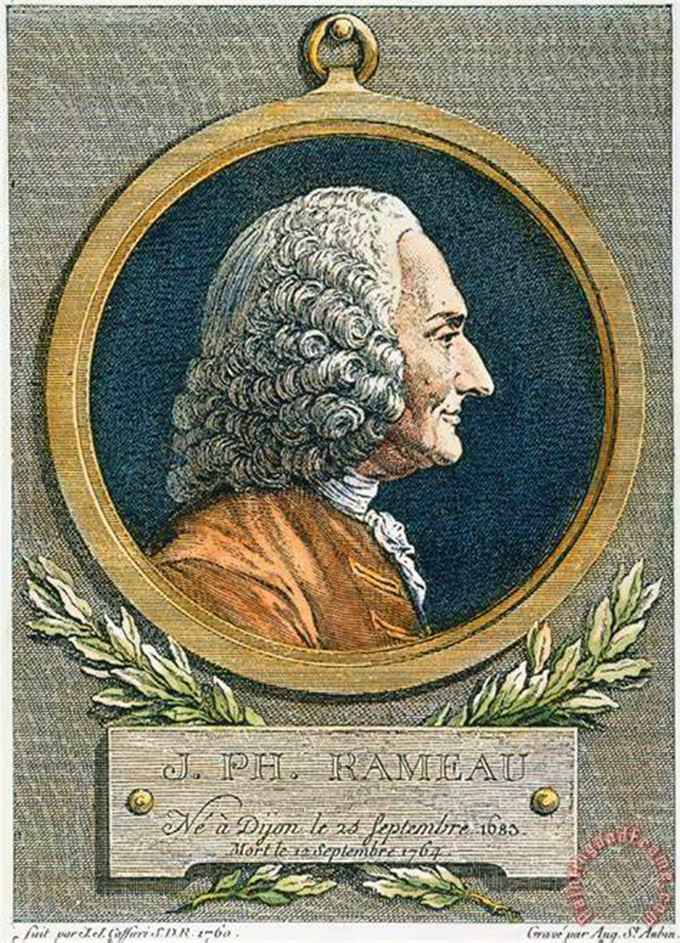 |
|
| |
让-菲利普.拉摩(Jean-Philippe Rameau) |
|
|
|
| |
让-菲利普·拉莫(Jean-Philippe
Rameau)(受洗于1683年9月25日,法国第戎,卒于1764年9月12日,巴黎),巴洛克时期后期的法国作曲家,今天以大键琴音乐,歌剧和其他戏剧风格而闻名,但在他的一生中也以音乐理论家而闻名。
拉莫的父亲让(Jean)在第戎的各个教堂里演奏风琴已有42年之久,并希望有一天能看到他的儿子坐在律师而不是管风琴演奏者的长凳上。这些希望因男孩在学校的糟糕表现而破灭。据说他17岁时,他爱上了一位年轻的寡妇,这位寡妇嘲笑他写给她的信中的语法和拼写错误。他试图完善自己的语言,但从他后来的理论著作的冗长程度来看,他的努力并没有取得永久性的进步。18岁时,他决定开始自己的音乐生涯,他去了意大利,但似乎只去了米兰。次年,他被任命为法国中部多个城市的风琴师,其中包括阿维尼翁、克莱蒙特、第戎、里昂。在首都有一段短暂的插曲,但显然巴黎并没有立刻喜欢这位外省的风琴手,尽管他曾于1706年在巴黎出版过一套精美的羽管键琴小调组曲《一级克拉维琴》(Premier
livre de clavecin)。这些作品显示了Louis Marchand的有益影响,Louis
Marchand是当时著名的风琴手和拨弦手,他对拉莫的演奏非常赞赏。
|
|
|
|
| |
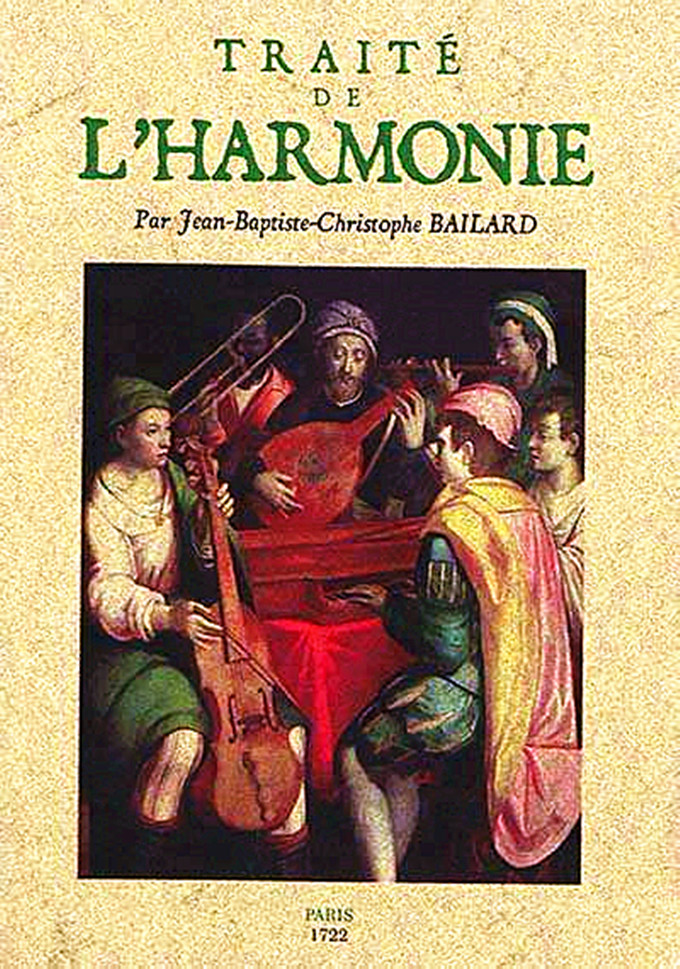 |
|
|
|
| |
让-菲利普.拉摩(Jean-Philippe Rameau)
最著名著作《和声学》(Traitedel’harmonie) |
|
|
|
| |
|
|
|
|
| |
Jean-Philippe
Rameau, (baptized September 25, 1683, Dijon, France—died September 12,
1764, Paris), French composer of the late Baroque period, best known
today for his harpsichord music, operas, and works in other theatrical
genres but in his lifetime also famous as a music theorist.
Rameau’s father, Jean, played the organ for 42 years in various churches
in Dijon and hoped one day to see his son on a lawyer’s, rather than an
organist’s, bench. These hopes were dashed by the boy’s deplorable
performance in school. At the age of 17 he is said to have fallen in
love with a young widow who laughed at the errors of grammar and
spelling in his letters to her. He tried to refine his language, but, to
judge by the prolixity of his later theoretical writings, his efforts
resulted in no permanent improvement. At the age of 18, after deciding
to pursue a musical career, he traveled to Italy but seems to have
gotten no farther than Milan. The following year, he received the first
of a series of appointments as organist in various cities of central
France: Avignon, Clermont, Dijon, Lyon. There was a brief interlude in
the capital, but apparently Paris did not take an immediate fancy to the
provincial organist, in spite of his having published there a fine suite
of harpsichord pieces in A minor, Premier livre de pièces de clavecin
(1706). These works show the beneficial influence of Louis Marchand, a
famous organist-harpsichordist of the day whose playing Rameau greatly
admired.
Back in Clermont by 1715, Rameau rashly signed a contract to be
cathedral organist for 29 years. He then settled down to investigate, in
an exhaustive and highly original manner, the foundations of musical
harmony. He attacked traditional theory on the ground that “The
Ancients,” who to Rameau included such relatively recent writers as the
16th-century Italian Gioseffo Zarlino, “…based the rules of harmony on
melody, instead of beginning with harmony, which comes first.”
Intuitively basing his studies on the natural overtone series, he
arrived at a system of harmony that is the basis of most 20th-century
harmony textbooks. Finally published in Paris in 1722, his impressive
Traité de l’harmonie (Treatise on Harmony) brought him fame at last and
a yearning to return to the capital. |
|
|
|
| |
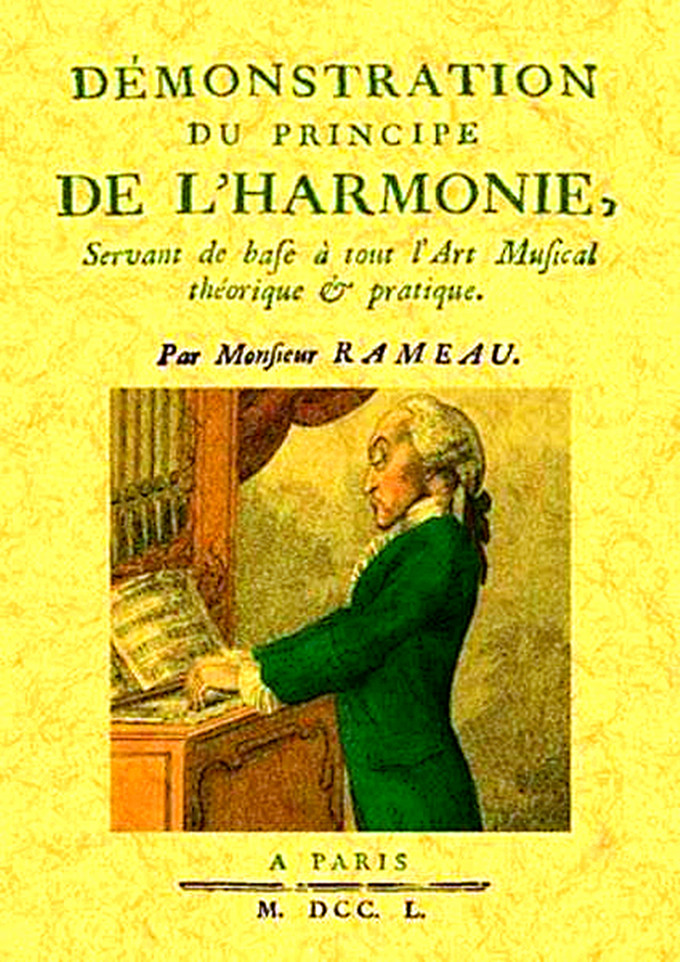 |
|
|
|
| |
拉莫另外一部力作《和声原则的论证》 (Demonstrationduprincipedel’harmonie) |
|
|
|
| |
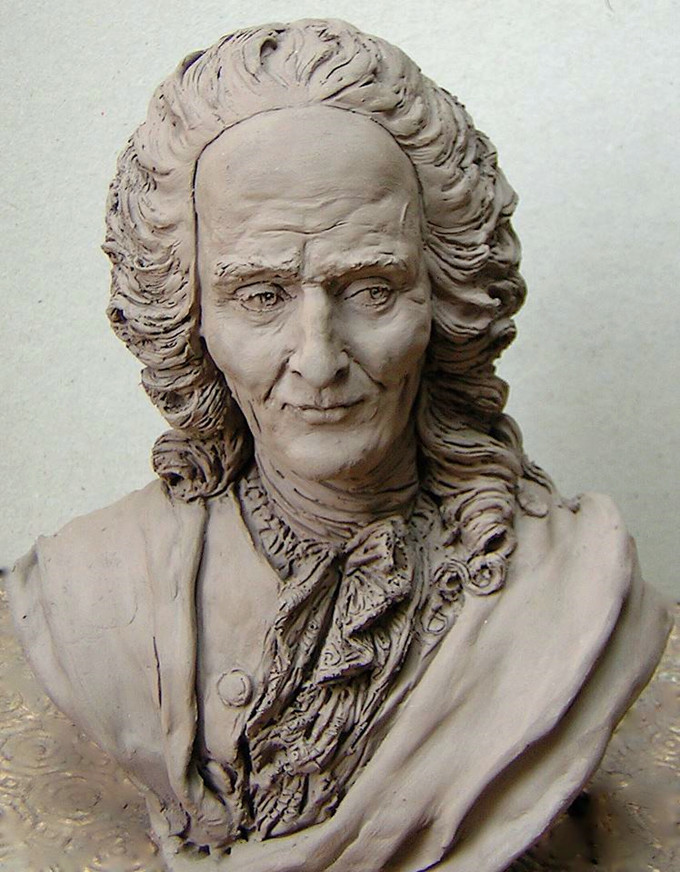 |
|
|
|
| |
让-菲利普.拉摩(Jean-Philippe Rameau)
的雕塑局部 |
|
|
|
| |
拉莫于1715年回到克莱蒙(Clermont),草率地签署了一份成为大教堂风琴手的合同,为期29年。然后,他静下心来,以一种详尽而极具独创性的方式,研究音乐和谐的基础。他抨击传统理论的理由是,古人把和声规则建立在旋律上,而不是以和声开始,而和声首先出现。拉莫认为古人包括16世纪的意大利作家乔瑟夫·扎里诺。他直观地以自然泛音系列为研究基础,得出了一个以20世纪大多数和声教科书为基础的和声体系。他那令人印象深刻的《和谐论》于1722年在巴黎出版,最终使他声名鹊起,并渴望回到巴黎。
通过对自然泛音系列的直观研究,他得出了一种和声系统,它是20世纪大多数和声教科书的基础。最终于1722年在巴黎出版,他令人印象深刻的《和声》(Treatise
on Harmony)最终使他成名,并渴望回到首都。
克莱蒙(Clermont)的当局不愿放手,释放他的故事以及他自己的著作和其他证据也揭示了他棘手的性格,执着和一心一意。在一个晚上的礼拜中,他表现出对教会当局的不满,他撤出了所有最不愉快的停靠站,并增加了最令人不快的不和,以便“鉴赏家们承认只有拉马可以如此不愉快地演奏。”但是,从合同解除后,他以“如此精致,光彩,力量和和谐的方式玩耍,以至于引起了会众的灵魂,他所希望的所有情感,从而加剧了所有人都感到失落的遗憾。即将维持。”
返回巴黎后,Rameau终生难忘,开始了崭新而活跃的生活。第二卷大键琴作品,《Piècesde clavecin ave m
undméthodesur lamécaniquedes
doigts》(1724年;“大键琴作品,用一种指法”)取得了比第一卷更大的成功,他成为了时尚的老师。仪器。一个为博览会的剧院编写偶然音乐的委员会为他作为戏剧作曲家的发展打下了基础,1725年在其中一个剧院上演了两名路易斯安那印第安人,这激发了他最好最著名的作品之一Les
Sauvages的创作。 ,后来用在他的歌剧芭蕾舞剧《 Les Indes
galantes》(首次演出1735年)中。第二年,他42岁,嫁给了一位19岁的歌手,他将出现在他的几部歌剧中,并要给他生育四个孩子。
|
|
|
|
| |
Back in Clermont
by 1715, Rameau rashly signed a contract to be cathedral organist for 29
years. He then settled down to investigate, in an exhaustive and highly
original manner, the foundations of musical harmony. He attacked
traditional theory on the ground that “The Ancients,” who to Rameau
included such relatively recent writers as the 16th-century Italian
Gioseffo Zarlino, “…based the rules of harmony on melody, instead of
beginning with harmony, which comes first.” Intuitively basing his
studies on the natural overtone series, he arrived at a system of
harmony that is the basis of most 20th-century harmony textbooks.
Finally published in Paris in 1722, his impressive Traité de l’harmonie
(Treatise on Harmony) brought him fame at last and a yearning to return
to the capital.
Authorities in
Clermont were loath to let him go, and the story of his release reveals,
as do his own writings and other evidence, something of his thorny
personality, his persistence, and his single-mindedness. At an evening
service he showed his displeasure with the church authorities by pulling
out all the most unpleasing stops and by adding the most rending
discords so that “connoisseurs confessed only Rameau could play so
unpleasingly.” But, after his release from the contract, he played with
“so much delicacy, brilliance, force and harmony, that he aroused in the
souls of the congregation all the sentiments he wished, thereby
sharpening the regret with which all felt the loss they were about to
sustain.”
Upon his return to Paris, where he was to remain for the rest of his
life, Rameau began a new and active life. A second volume of harpsichord
pieces, Pièces de clavecin avec une méthode sur la mécanique des doigts
(1724; “Harpsichord Pieces, with a Method for Fingering”), met with
considerably more success than the first, and he became a fashionable
teacher of the instrument. A commission to write incidental music for
the Fair theatres planted the seeds of his development as a dramatic
composer, and the display of two Louisiana Indians at one of these
theatres in 1725 inspired the composition of one of his best and most
celebrated pieces, Les Sauvages, later used in his opéra ballet Les
Indes galantes (first performed 1735). The following year, at the age of
42, he married a 19-year-old singer, who was to appear in several of his
operas and who was to bear him four children. |
|
|
|
| |
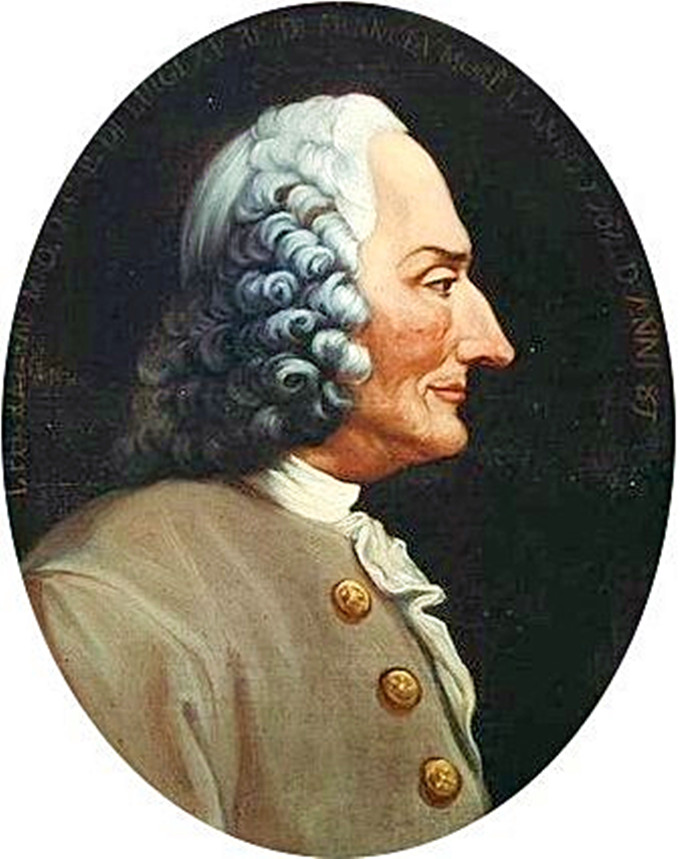 |
|
|
|
| |
很少见的让-菲利普.拉摩(Jean-Philippe
Rameau)侧身像 |
|
|
|
| |
当时他最有影响力的人是勒里奇·德·拉·普普利尼埃(Le
Riche de
laPouplinière),他是法国最富有的人之一,也是有史以来最伟大的音乐赞助人之一。拉莫(Raueau)担任拉波普利涅(LaPouplinière)出色的私人乐团的负责人,任职22年。他还教了这位金融家的才华横溢和音乐般的妻子。这位作曲家的家人最终搬进了LaPouplinière的城镇豪宅,并在Passy的城堡度过了夏天。在LaPouplinière与妻子分居后,赞助人与作曲家之间的田园诗般的关系逐渐终结,Rameau被年轻,前卫的作曲家Karl
Stamitz所取代。然而,与此同时,拉波普妮埃(LaPouplinière)圈子的入场使拉美(Raueau)接触了各种各样的文学艺术。雅培·佩勒格林(AbbéPellegrin)的圣经歌剧《耶夫特》(Jephté)在1732年被拉莫的竞争对手米歇尔·德·蒙特克莱尔(Michel
deMontéclair)成功地定型为音乐,他将成为拉梅的自由主义者,因为他的第一部也是许多最出色的歌剧《希波吕特与爱丽丝》。它首先在1733年春天在LaPouplinière的家中进行,然后在秋天在歌剧院(Opéra)进行,并于1734年在法院进行了表演。安德烈·坎普拉(AndréCampra)也许是当时最著名的法国作曲家,对孔迪王子说:“我的主,这首歌剧中有足够的音乐来演奏十首;这个人会让我们所有人黯然失色。”
在某些耳边,确实有太多音乐。那些因让·巴蒂斯特·卢利(Jean-Baptiste
Lully)的歌剧而长大的人,对拉美编排的复杂性,与之相伴的朗诵活动(类似演讲的部分)以及他丰富而常常是不和谐的和声感到困惑。然而,拉梅本人在《
Les Indes galantes》的序言中称赞了他的前任,赞扬了“伟大的Lully朗诵中的美丽的夸张和措辞的转变”,并说他试图模仿它。
,尽管不是“卑鄙的抄写员”。确实,至少从技术上讲,拉莫歌剧中的几乎所有东西在卢利中都有先例。然而,他作品的内容,丰富的戏剧对比,管弦乐队的精彩片段,以及最重要的是,渗透着感性的忧郁和忧郁的田园气息,使他处于另一个世界:简而言之,洛可可世界路易十五。
在希波吕特(Hippolyte)首场演出中的是伟大的伏尔泰(Voltaire),他打趣说拉梅(Raueau)“是一个不幸的人,比卢利(Lully)知道更多的音乐”。但是他很快走到了拉美的身边,为他写了一封精美的歌词,Samson,表面上是出于宗教原因而被取缔的,但实际上是因为反对伏尔泰的阴谋。音乐丢失了。但是,他们后来在两个繁华的法庭娱乐节目上的合作得以保留:La
Princesse de Navarre和Le Temple de la
Gloire(均为1745年)。前者由让·雅克·卢梭(Jean-Jacques Rousseau)浓缩并修订为《 LesFêtesde
Ramire》(1745年)。
卢梭,让·朗德·阿朗伯特(Jean Le Rond d'Alembert)和其他与丹尼斯·狄德罗(Denis
Diderot)的《百科全书》相关的作家开始都是热心的拉美发烧友,但到了1750年代中期,随着他们越来越热爱意大利音乐,他们逐渐反对了他。拉莫(Reauau)像任何人一样欣赏新的意大利音乐,但是他以这种风格创作的作品,例如《
LesFêtesde Polymnie》(1745年)和他的最终作品《 Abaris ou
lesBoréades》(1764年)的序曲,个性的标志。
可以说,拉姆奥的职业生涯顶峰涵盖了从1748年开始的短暂时期,当时他在八天之内抛弃了杰作《皮格马利翁》,并在董事会中创作了其他六部歌剧,直到1754年,他写了《
La Naissance
d'Osiris》(《奥西里斯(Osiris)的出生”),代表路易十六的未来。此后,随着流行的音乐风格逐渐被人们称为“古典音乐”,他的名声逐渐减弱。公众喜欢与拉莫的深刻情感和浓郁的巴洛克晚期和谐简单融合的动听音乐。 |
|
|
|
| |
His most
influential contact at this time was Le Riche de la Pouplinière, one of
the wealthiest men in France and one of the greatest musical patrons of
all time. Rameau was put in charge of La Pouplinière’s excellent private
orchestra, a post he held for 22 years. He also taught the financier’s
brilliant and musical wife. The composer’s family eventually moved into
La Pouplinière’s town mansion and spent summers at their château in
Passy. This idyllic relationship between patron and composer gradually
came to an end after La Pouplinière separated from his wife, and Rameau
was replaced by the younger, avant-garde composer Karl Stamitz.
Meanwhile, however, admittance to La Pouplinière’s circle had brought
Rameau into contact with various literary lights. Abbé Pellegrin, whose
biblical opera Jephté had been successfully set to music by Rameau’s
rival Michel de Montéclair in 1732, was to become Rameau’s librettist
for his first and in many ways finest opera, Hippolyte et Aricie. It was
first performed in the spring of 1733, at La Pouplinière’s house, then,
in the autumn, at the Opéra, and in 1734 it was performed at court.
André Campra, perhaps the most celebrated French composer of the time,
remarked to the Prince de Conti: “My Lord, there is enough music in this
opera to make ten of them; this man will eclipse us all.”
To some ears there was, indeed, too much music. Those who had grown up
with the operas of Jean-Baptiste Lully were baffled by the complexity of
Rameau’s orchestration, the intensity of his accompanied recitatives
(speechlike sections), and the rich and often dissonant diversity of his
harmonies. Rameau himself, however, professed his admiration for his
predecessor in the preface to Les Indes galantes, in which he praised
the “beautiful declamation and handsome turns of phrase in the
recitative of the great Lully,” and stated that he had sought to imitate
it, though not as a “servile copyist.” Indeed, almost everything in
Rameau’s operas has, at least technically, a precedent in Lully. Yet the
content of his works, the rich dramatic contrasts, the brilliant
orchestral sections, and, above all, the permeating sensuous melancholy
and languorous pastoral sighings, put him in a different world: in
short, the Rococo world of Louis XV.
Among those at the first performance of Hippolyte was the great
Voltaire, who quipped that Rameau “is a man who has the misfortune to
know more music than Lully.” But he soon came around to Rameau’s side
and wrote for him a fine libretto, Samson, which was banned ostensibly
for religious reasons but really because of a cabal against Voltaire;
the music was lost. Their later collaboration on two frothy court
entertainments is preserved, however: La Princesse de Navarre and Le
Temple de la Gloire (both 1745). The former was condensed and revised as
Les Fêtes de Ramire (1745) by Jean-Jacques Rousseau.
Rousseau, Jean Le Rond d’Alembert, and other writers associated with
Denis Diderot’s Encyclopédie began as ardent Rameau enthusiasts, but, by
the mid-1750s, as they warmed more and more to Italian music, they
gradually turned against him. Rameau appreciated the new Italian music
as much as anyone, but the works he composed in this style, such as the
overtures to Les Fêtes de Polymnie (1745) and to his final work, Abaris
ou les Boréades (1764), do not bear the mark of individuality.
The zenith of Rameau’s career may be said to have encompassed the brief
span from 1748, when he tossed off the masterpiece Pygmalion in eight
days and had six other operas on the boards, through 1754, when he wrote
La Naissance d’Osiris (“The Birth of Osiris”) for the birth of the
future Louis XVI. Thereafter, his fame diminished, as the prevailing
musical style became what is now generally called “Classical.” The
public preferred catchy tunes with simple harmonies to Rameau’s profound
emotion and rich, late-Baroque harmony. |
|
|
|
| |
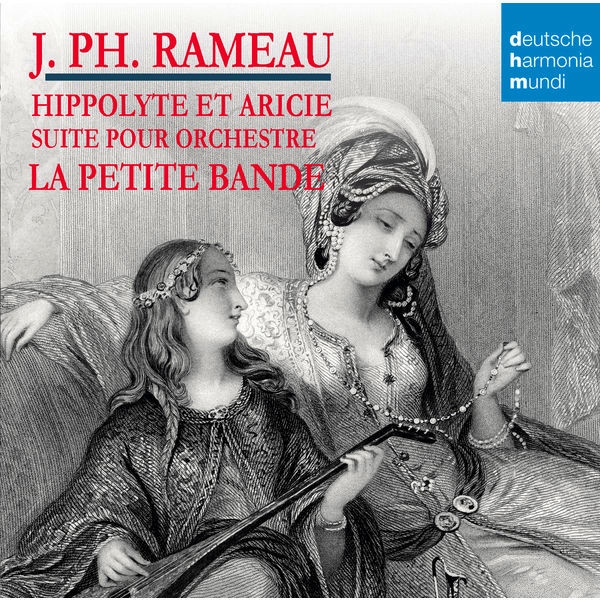 |
|
|
|
| |
让-菲利普.拉摩(Jean-Philippe
Rameau)的歌剧《希波吕托斯与阿里奇埃》
唱片封面 |
|
|
|
| |
拉摩(Jean-Philippe
Rameau)的歌剧《希波吕托斯与阿里奇埃》介绍 |
|
|
|
| |
让-菲利普·拉莫(Jean-Philippe
Rameau)是法国伟大的巴洛克作曲家、音乐理论家。他是继让-巴普蒂斯特·吕利之后最伟大的法国歌剧作曲家,不但是当时法国乐坛的领军人物,还是和声理论的重要奠基人。拉莫的歌剧,尤其是他早期的歌剧作品在很大程度上遵循着吕利所创立的法国歌剧的创作模式与传统,但是他并没一味地模仿,而是把自己独特的作曲风格完美地融入到歌剧创作中,并且为后来的法国歌剧创作提供了新的典范。1732年,拉莫完成了他的第一部歌剧代表作《希波吕托斯与阿里奇埃》(Hippolyte
et
Aricie)。音乐史学家们普遍认为,这部歌剧是18世纪早期法国歌剧的代表作之一,体现了拉莫歌剧创作的成熟并展示了拉莫的创作风格。在歌剧创作中,他非常善于运用和声色彩来提升音乐的敏感性、加强音乐的表现力。而在他之前的歌剧作曲家们并没有十分清楚的认识到这一点。但在当时,这部歌剧并没有受到法国观众的一致好评,反而引起了很多人对拉莫歌剧创作风格的争论。
把古时的表演方式予以实践来作为一种创新的手段看似矛盾,然而这种仿古的概念自20世纪80年代以来就已存在,并且现在比以往任何时候都更加蓬勃发展。这版巴洛克作曲家拉莫的歌剧《希波吕托斯与阿里奇埃》于2012年在巴黎国立歌剧院上演,获得了极大的赞誉,这版制作既采用了复古的舞台布景与服化道,歌唱家与音乐家还运用了古老的歌唱技巧与巴洛克时期的乐器。之所以这样,是因为比起名为先锋实为停滞的极简主义和“现代版”的制作,这种充满诚意的旧式演绎或许更能打动观众。音乐评论家们认为,来自过去时代的灵感或许就是今天真正的创新所萌发之处。
并且,这为今日艰难生存的众多歌剧院们提供了一种新的茁壮成长的方式,毕竟时至今日,歌剧的地位可能不再那么重要了。 |
|
|
|
| |
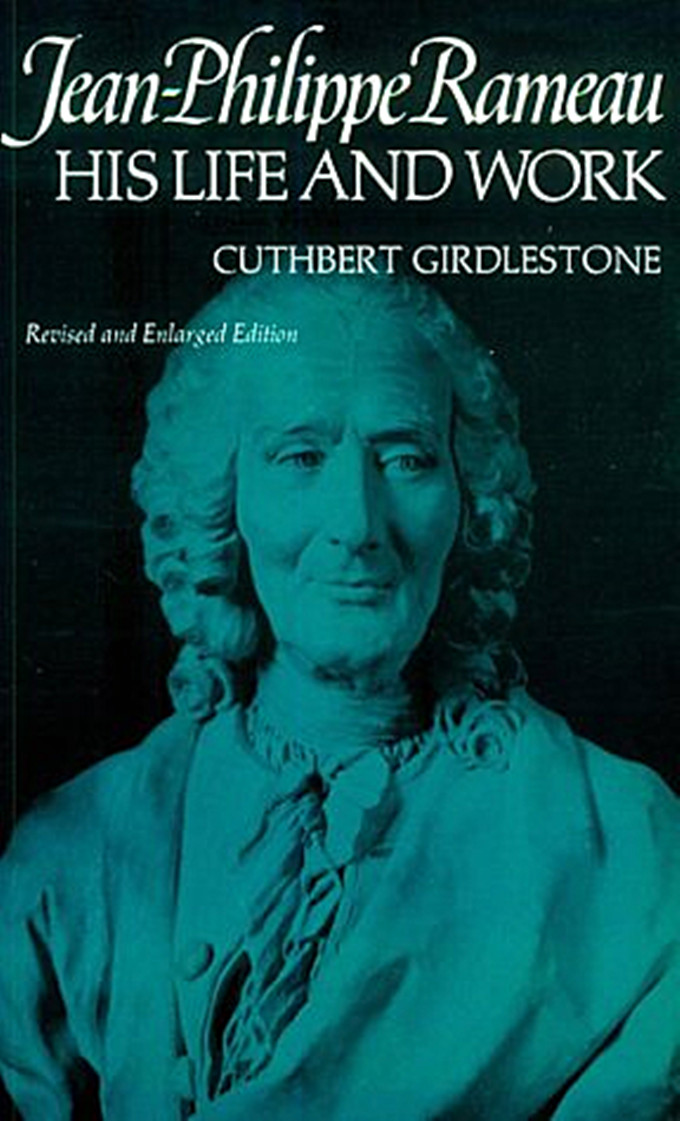 |
|
|
|
| |
让-菲利普.拉摩(Jean-Philippe
Rameau)的研究在不断引起人们的重视 |
|
|
|
| |
|
|
|
|
| |
Today in the
history of music
September 12, 1764, 80-year-old French composer and theorist
Jean-Philippe.Jean-philippe Rameau died.He lived a charmed life."His
heart and soul are on his harpsichord."An acquaintance said, "When he
closes his eyes, the house is empty."
Jean Philippe Rameau (1683 ~ 1764) was a French opera master.Rameau was
a master of late growth. At the age of 50, he produced his first opera,
Hippolytus and Aririche. By the end of his opera, Northerner, he had
written nearly 30 operas in only 31 years.
Jean Philippe Rameau's music, whether of opera or harpsichord, exudes a
rich variety of colors, and is more varied, full, and atmospheric than
Lv's.His opera is particularly grand, luxurious and delicate, with ups
and downs of drama, and vivid performance, pay attention to the overall
sense of opera, as well as the description of orchestral music,
especially the vivid description of earthquake, lightning and thunder,
and storm, giving people an immersive shock.
His "The Gallant Indian" is one of the most beautiful ballet operas with
four funny stories.The Generous Turk tells the story of a Turk who
returns to a beautiful Christian slave girl his lover.The Inca in Peru:
Fani, the Princess of the Inca kingdom, decides to follow his lover
after learning that he is a rogue.Flowers, Festival of Persia: The story
of two Persian couples who get back together after many
misunderstandings;The Barbarian: Chima, an Indian princess, is
indifferent to her foreign suitors and faithful to her lover.
Castor and Polyeus, another famous opera, is heavy and poetic, both in
plot and music.The story is from ancient Greek mythology. It tells the
story of Jupiter, the god of heaven, who was moved by the brotherly love
between Castor and Polyus and ascended to the sky as the twin signs of
The zodiac.
Lamo's harpsichord is also outstanding, including various baroque dance
forms with novel titles, such as "Indifference", "Birdsong", "gentle
moans", "The Fool of Solognay", "Talk of the MUSES", "The Vortex",
"Cyclops", "Three Hands", "Shy", "bold" and so on.He is also the author
of the famous book and Acoustics.
French music was dated after Lamour until Berlioz (1803-1869) was born.
The life situation
Jean-philippe Lamour (Rameau) was born in Dijon on 25 September 1683 and
died in Paris on 12 September 1764.He is the greatest composer of the
baroque period French and theorists, and johann Sebastian Bach (J.S.B
ach, 1685-1750), Handel (Handel, 1685-1759), beautiful nico Scarlatti
(D.S carlatti, 1685-1757) and Taylor (1681-1767) Te lemann, life at the
same time, but not at that time, France's leading music - especially in
the aspect of music drama, or important founder of harmony theory.
Lamo's father was an organist of Saint-Etienne of Dijon, and the first
musician of the family;His mother, Cladina Demadina Coote, came from a
less privileged aristocratic family in the village near
Zemax.Jean-philippe was the seventh of eleven children.He was sent to
the Jesuit Academy in Gomes, where he spent more time singing and
composing than studying.In 1702, he became temporary organist at Avignon
Cathedral;In May, he was appointed organist at Clermont Cathedral.It was
not until 1706 that he arrived in Paris and became an organist at the
Jesuits of the Boulevard Saint-Jacques and at Mercedes DE Leon of the
Avenue DE Chaume, where he published his first collection of harpsichord
compositions.In 1709, Lamour returned to Dijon and succeeded his father
at Notre Dame;In July 1713 he played the organ at The Jacobin in Lyon,
and in April 1715 he returned to Clermont Cathedral, where he spent
another eight years.To secure his freedom before the end of his
contract, he drove himself to the limit at one dinner party: first by
refusing to play, then by plucking all the most unpleasing bolts on the
organ and adding as many dissonances as possible.He returned to Paris in
1722 or early 1723 and settled there after the priests had given him
permission to leave.At Lyons and Clementine, he had already produced
several sutras and secular Cantatas, and completed his first book, the
Traitedel 'Harmonie, published by Ballard in 1722, when Lamo was still
organist at Clementine Cathedral.
For the first nine years in Paris he did not seem to have held any
office.He and his companion, Piron, appeared in skits and farce for the
Farr Theatre.In 1724 and 1728, Lamour published his second and third
collections of organ works.In 1726, he married a 19-year-old MarieLouise
Mungo, from a musical family in Lyon, whose brother helped make Lamo's
music famous at the Palma court.In 1727, he competed with Daquin
(1694-1772) for the post of organist at St Paul's Cathedral, but was
defeated.In 1732, Lamo was already st. Croix's organist at Bretonelli,
and he became a Jesuit monk in 1736.His book and acoustic "and" the
music theory of new system "(Noveausystemedemusiquetheorique, 1726), and
before that in several papers in" mercury "and discusses, make people
see him as a great theorist of potential, but his greatest wish is
creation stage.In 1727, Lamo asked Lamotte-Houdar to create a script,
but it didn't finish.Around 1726 Pilon introduced him to Lerce DE La
Briniere, who ran a private orchestra and whose wife,
Marie-Theresedeshayes, was an admirer of Lamour's.At la Bruyneille's
home, Lamo met the playwright Abbesimon-JosephPellegrin (1633-1745), who
wrote 15 tragedies, tragic lyrics and balets, among other things an
opera script.Lamo's first opera, Hippolytus and HippolyteetAricie,
premiered in July 1733 at the home of La Bouprienne and was performed at
the Opera house on October 1 of the same year.He was just 50 years old,
and Pelglan was 70.Since then, Lamo has shown his talents in both
composing and theory.For 22 years he conducted the financier's (or La
Bouprienne's) orchestra, and from 1744 to 1753 he lived in La
Bouprienne's mansion (now 59 Avenue Richelieu).When Lamour left, he
returned to Bunce Onfat, where he had lived from 1739 to 1744.He lived
there from then on until his death in 1764.
The theoretical study
Lamo believed that the study of theory was as important as composing
music, and he stuck to this until the end.From 1732 until the end of his
life, his books, essays and operas were published in a steady
stream.Strangely, he never read his own books, but enjoyed his own
music, yet he preferred his theories to be accepted, and preferred to be
called a thinker rather than a composer.Later in life, as his creative
resources dried up, he told Chabanon that he regretted devoting his time
to composing because he preferred to spend it studying the principles of
his art.Larmor obtained should have to praise, two of his book "the
formation of the harmony" (Generationharmonique) and the principle of
"harmony" of argument (Demonstrationduprincipedel 'harmonie) was
presented to arts association, and received a high evaluation.DE
alcatel-lucent bell (D 'Alembert), in the form of more popular than the
original in the elements of the theory and practice of music, according
to the principles of Mr Lamo and
"(ElementsdemusiquetheoriqueetpartiqueselonlesprincipesdeM. Rameau,
1752) have been summarized for this two works in the book.He also
attaches great importance to foreign experts, these experts have London
Hans Sloane (HansSloane), younger have lived in Basel, jean Bernoulli
(JeanBernoulli), Berlin's Mr Gilleard (Euler), bolognese, ray paolo
maldini (PadreMartini), in these people, not all the people gave him a
high evaluation.He castel godfather (FatherCastel) conducted heated
debate, which is on the harpsichord with chromatography the inventor of
the calibration device (clavecinoculaire) of temperament, was one of the
earliest proponents of the larmor, but later, he became a fierce critic,
he, with DE alcatel-lucent bell works from the support of larmor turned
to the criticism.He also resented the imrespect he received from
Rousseau after hearing her "Musesgalantes" at his home in La Bouprienne
in 1745, and Rousseau never went away.He also attacked several articles
on music that DE Alembert and Rousseau wrote for the Encyclopedia
between 1755 and 1760, and for this he offended DE Alembert.On the other
hand, he admired the architect and writer CharlesEtienneBriseux, who
Shared some of his views.
Lamo could not have had so called friendly fellow travellers, and did
not seem to need close friendship."It was the emptiness of society that
made him escape," explains Dagoty.Chabanon watched him walking up and
down the gardens of the Tuileries and the royal palaces, but did not
dare to greet him first.One day, he plucked up his courage to speak to
him, and to his surprise, Lamo, instead of rejecting him, welcomed him
and relieved his emptiness by telling him that the old man was only too
happy to talk to him.However, he said very little, and even his wife
didn't know much about him for the first half of his life.It was only
when he was discussing music theory that he was able to talk
eloquently.Pilon, who had been in a relationship with Lamour for 40
years, Shared these amusing details with Maret, Lamour's doctor, for an
obituary, but the doctor never dared to use the most vivid descriptions
in an obituary.Charbanon's eulogy is the most comprehensive description
of the old man's character.Diderot's depiction of Lamo in
LeneveudeRameau is discredited, even distorted (the nephew was put on
trial for some time).Lamo's reputation as a parsimonious man was at odds
with his several ACTS of generosity towards his kinsfolk. Although He
was not an agreeable man, Lamo was never called mean or a snob.He was
very open in the face of public censure, but he could not bear people to
speak ill of him behind his back.
Letters to the peerage
Lamo died a few days before he was eighty-one, four months after he was
made a peerage.Since 1745, he has enjoyed the title of "Royal
composer".He was buried in the church of St. Eustash in his parish, but
the bust of Ramo that stands there a century later does not indicate
where he slept because the exact location is no longer known.
Lamo's physique was familiar: tall and trim, resembling Voltaire's, his
features hardly resembled those of his contemporaries;They also remind
us of another composer and theorist of the time, Tartini (Tartini,
1692-1770).'He has a pointed chin, a shriveled belly, and very spineless
legs,' SebastienMercier said.He was unusually tall and thin, Shabanon
wrote, "more like a ghost than a man".Ramo's hawk-like profile is so
aesthetically pleasing that it's hard to find a face image of him,
except for the portrait drawn by Aved in Dijon.
Today's video:1. Jean-philippe Lamour's Hippolytus and Aririche (2012)
at the State Opera House in Paris;2. Tuscanini's string Quartet performs
a quartet concert by Rameau et al.3. Garden Outdoor Concert for the 40th
anniversary of the French Flourishing Art and Ancient Orchestra (2019). |
|
|
|
| |
|
|
| |
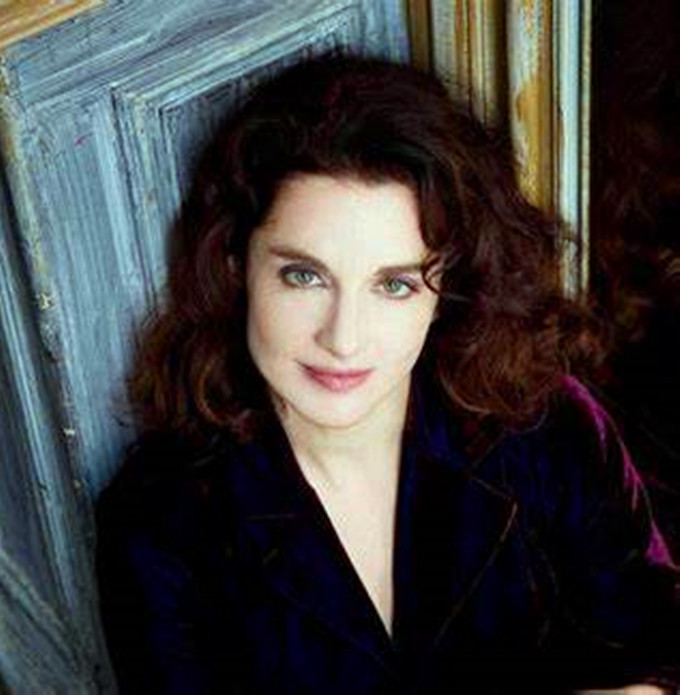 |
|
|
|
| |
艾曼纽埃尔·海姆(Emmanuelle Haim) |
|
|
|
| |
艾曼纽埃尔·海姆(Emmanuelle
Haim)作为一名键盘演奏家和指挥家,被誉为巴洛克风格曲目的演奏家和冠军。在2019/
2020这一季中,她将在皇家音乐会、伦敦交响乐团和NDR
Elbphilharmonie交响乐团首次亮相。艾曼纽尔定期指挥柏林爱乐乐团和洛杉矶爱乐乐团,并将在这个赛季回到这两个乐团。上一季,她的首演包括纽约爱乐乐团和费城交响乐团,以及苏黎世歌剧院,她在那里指挥了拉莫的《希波利特和阿里奇》的新剧目。其他最近的首次演出包括Bayerischer
Rundfunk和Leipzig
Gewandhaus管弦乐团以及维也纳爱乐乐团,他们在维也纳和卢塞恩音乐节上都有演出。
2000年,艾曼纽埃尔创立了Le Concert d
'Astree乐团,很快在国际上建立了声誉。在2019/
2020季期间,他们的表演包括在里尔歌剧院上演的珀塞尔的《印度女王》,以及在卢森堡和卡昂上演的拉莫和蒙顿维尔的双比尔。
艾曼纽埃尔定期在格林德本音乐节歌剧演出中担任指挥,包括《狄奥多拉》(Handel)和《波波豌豆》(L’incoronazione
di Poppea)(蒙特威尔第)。她还与Glyndebourne巡回歌剧和芝加哥抒情歌剧合作演出。 |
|
|
|
| |
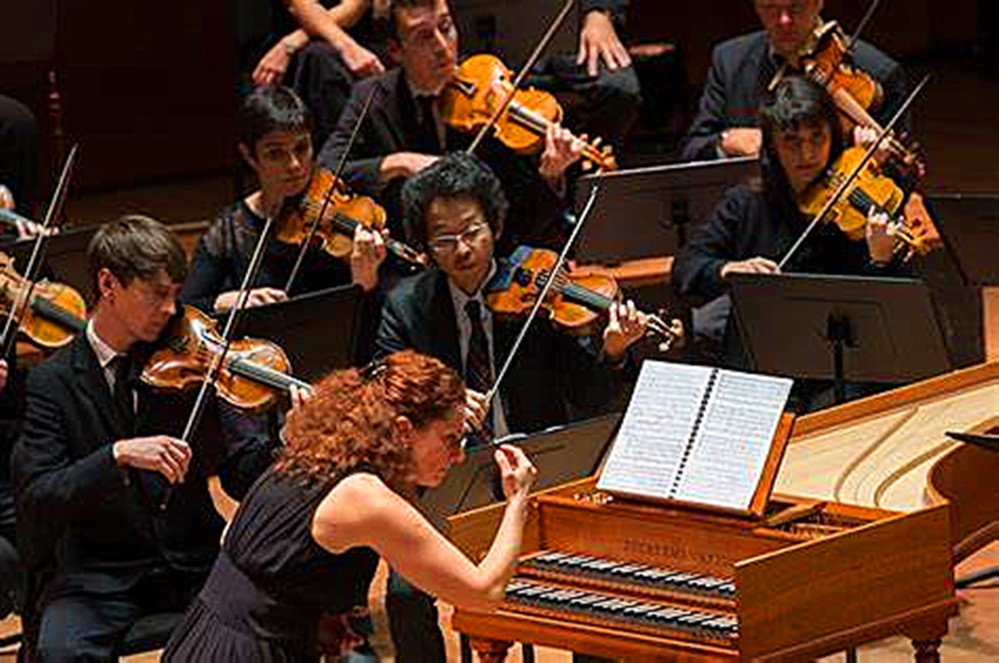 |
|
| |
艾曼纽埃尔·海姆(Emmanuelle Haim)在指挥中 |
|
|
|
| |
The
Emmanuelle Haïm is highly acclaimed as a performer
and champion of the Baroque repertoire, both as a
keyboard player and conductor. During the 2019/20
season she will make her debut with the Royal
Concertgebouw, London Symphony and NDR
Elbphilharmonie Orchestras. Emmanuelle regularly
conducts the Berliner Philharmoniker and Los Angeles
Philharmonic and will return to both during this
season. Last season her debuts included the New York
Philharmonic and Philadelphia Orchestras as well as
Zurich Opera, where she conducted a new production
of Rameau’s Hippolyte et Aricie. Other recent debuts
have included the Bayerischer Rundfunk and Leipzig
Gewandhaus Orchestras as well as the Wiener
Philharmoniker, with performances in Vienna and at
the Lucerne Festival.
In 2000 Emmanuelle founded Le Concert d’Astrée,
which quickly established an international
reputation. During the 2019/20 season their
performances include a new production of Purcell’s
The Indian Queen at Lille Opera and a Rameau and
Mondonville double bill in Luxembourg and Caen.
Emmanuelle has conducted regularly at Glyndebourne
Festival Opera, including Theodora (Handel) and
L’Incoronazione di Poppea (Monteverdi). She has also
performed with Glyndebourne Touring Opera and
Chicago Lyric Opera.
With Le Concert d’Astrée, Emmanuelle has a very
extensive discography with Erato/Warner Classics,
which have won numerous awards. Their most recent
releases are a CD of Italian Cantatas by Handel
performed by Sabine Devieilhe and Lea Desandre and a
DVD of Handel’s Rodelinda filmed in Lille in 2018.
Emmanuelle is a Chevalier de l’Ordre National de la
Légion d’Honneur, an Officier des Arts et des
Lettres, an Officier de l’ordre national du Mérite
and an Honorary Member of the Royal Academy of
Music. |
|
|
|
| |
|
|
|
|
| |
|
|
|
|
| |
弦乐四重奏 &
拉莫,门德尔松,柴可夫斯基,格什温-音乐作品 |
|
|
|
| |
Rameau,Mendelssohn,Tchaikovsky,Gershwin-Quartet |
|
|
|
| |
拉莫、门德尔松、柴可夫斯基、格什温-托斯卡尼尼四重奏-首次公开募网上室内乐系列
以色列爱乐乐团
首播开始于2020.08.31
订阅并点击铃铛,这样你就不会错过一场音乐会!
https://bit.ly/IPO-YouTube
托斯卡尼尼的弦乐四重奏:
叶夫根尼亚·皮科夫斯基,小提琴
阿萨夫·毛兹,小提琴
德米特里·拉特鲁什,中提琴
费利克斯·内米罗夫斯基,大提琴
拉莫:《来自Indes Galantes的六支舞》——由罗伯特·莫泽斯编曲
来自四个民族。
小步舞曲
狭长形鼓
嘉禾舞在回旋诗
序曲:太阳崇拜
空气杜特
门德尔松:弦乐四重奏四首
变化无常的行板
诙谐曲:快板leggiero
摩羯座:行色匆匆
赋格:节奏序曲
柴可夫斯基:弦乐四重奏中的如歌的行板。1,作品11号
格什温:我爱的人
想了解更多内容,请关注我们的Instagram和Facebook
https://www.instagram.com/israel_phil..。
视频导演:尤尔·卡利纳
摄影导演:Dror Heller
声音:Rafi Eshel, Yaron Aldema - Eshel Sound Studios
创意总监:伊丽莎白·卡利纳
灯光设计师:Dani Rogovin
Rameau, Mendelson, Tchaikovsky & Gershwin - Toscanini Quartet -
IPO Online Chamber Music Series
Israel Philharmonic Orchestra
首播开始于 2020.08.31
Subscribe and click on the bell so you do not miss a single
concert!
https://bit.ly/IPO-YouTube
Toscanini String Quartet:
Yevgenia Pikovsky, violin
Asaf Maoz, violin
Dmitri Ratush, viola
Felix Nemirovsky, cello
Rameau: Six Dances from Indes Galantes - Arranged by Robert
Mozes
Entrée des quatre nations
Menuet
Tambourin
Gavotte en Rondeau
Prélude: Adoration du soleil
Air du sauvage
Mendelssohn: Four Pieces for String Quartet
Tema con variazioni: Andante sostenuto
Scherzo: Allegro leggiero
Capriccio: Andante con moto
Fugue: A tempo ordinario
Tchaikovsky: Andante cantabile from String Quartet no. 1, op. 11
Gershwin: The Man I Love
For more content, follow us on Instagram and Facebook
https://www.instagram.com/israel_phil...
Video Director: Yoel Culiner
Director of Photography: Dror Heller
Sound: Rafi Eshel, Yaron Aldema - Eshel Sound Studios
Creative Director: Elizabeth Culiner
Light Designer: Dani Rogovin |
|
|
|
| |
|
|
|
|
| |
|
|
|
|
| |
法国繁盛艺术古乐团成立40周年 花园露天音乐会
Les Arts Florissants feiern ihr 40.
Jubiläum
|
|
|
|
| |
在2019年,由威廉·克里斯蒂(William Christie)创立的巴洛克合奏Les Arts
Florissants以其举世闻名的大型巴洛克咏叹调庆祝其成立40周年。该活动在克里斯蒂本人设计的法国西部旺代乡村庄园花园中举行。向一生的不懈努力致敬。
亨利·珀塞尔,让-菲利普·拉莫,安东尼奥·维瓦尔迪,乔治·弗里德里希·汉德尔作品
保罗•阿格纽(男高音)
托马斯·邓福德 (Laute)
雷切尔·雷蒙德(Sopran)
埃洛迪·丰纳德(Sopran)
西里尔Auvity(本体)
利桑德罗Abadie(低音) |
|
|
|
| |
Works by
Henry Purcell, Jean-Philippe Rameau, Antonio
Vivaldi, Georg Friedrich Händel
Paul Agnew (Tenor)
Thomas Dunford (Laute)
Rachel Redmond (Sopran)
Elodie Fonnard (Sopran)
Cyril Auvity (Tenor)
Lisandro Abadie (Bass) |
|
|
|
| |
|
|
|
|
| |
未得原作者编者授权严禁转载www.mt77.com任何内容 |
|
|
|
|
|
|
|
|
|
|
|
|
|
|


